NASA’s Curiosity Mars rover is now performing Sol 3019 tasks.
Curiosity was slated to attempt a novel experiment to witness the “triboelectric effect” for the first time on Mars, reports Melissa Rice, Planetary Geologist at Western Washington University in Bellingham, Washington.
What’s the triboelectric effect?

Curiosity Right B Navigation Camera image taken on Sol 3018, February 1, 2021.
Credit: NASA/JPL-Caltech
“Certain materials build up an electrostatic charge when they move around, and when that buildup of electricity discharges, it can cause a spark,” Rice explains. “You may know the triboelectric effect as the static cling – and occasional shocks – from clean clothes fresh out of the dryer.”
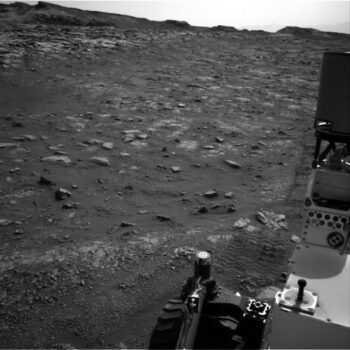
Curiosity Right B Navigation Camera image taken on Sol 3018, February 1, 2021.
Credit: NASA/JPL-Caltech
Spark above the sands
On Mars, no clothes are tumbling in dryers, Rice adds, “but sand grains are tumbling in the wind, and they could build up a triboelectic charge. When that electricity discharges, it could ionize gases near the surface, which could influence Mars’ atmospheric chemistry,” Rice notes. “If the discharges occur at night, it may be possible to see a spark above the sands. In the likely event we don’t see any flashes of light, we’ll still be able to place constraints on how much this process occurs at Gale.”
The team scoped out a series of Mars Hand Lens Imager (MAHLI) images to be taken at night, staring at the large sand deposit to the south (which Curiosity had recently investigated at the “Sands of Forvie” location.
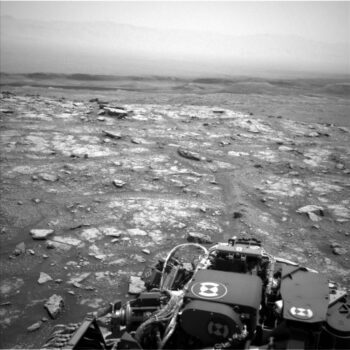
Curiosity Left B Navigation Camera image acquired on Sol 3018, February 1, 2021.
Credit: NASA/JPL-Caltech
“We can’t be certain if the triboelectic effect will be visible to MAHLI,” Rice continues, “but the possibility of capturing it has certainly sparked our curiosity!”
Long drive
In addition to the triboelectric experiment, Rice says the science team also plans to use the Alpha Particle X-Ray Spectrometer (APXS) and MAHLI to study the bedrock target “Neuvic,” Mastcam to take multispectral images of “Neuvic” and the adjacent bedrock target “Vezere,” in addition to panoramic images of the landscape, and Navcam to take movies to search for dust devils.
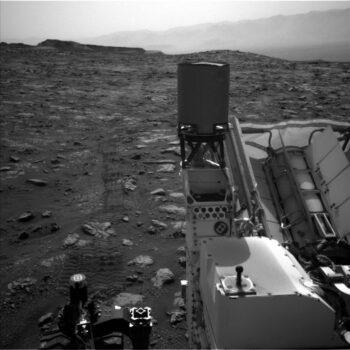
Curiosity Left B Navigation Camera image acquired on Sol 3018, February 1, 2021.
Credit: NASA/JPL-Caltech
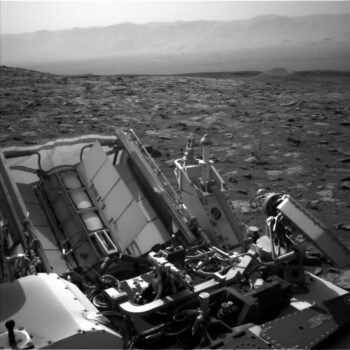
Curiosity Left B Navigation Camera image acquired on Sol 3018, February 1, 2021.
Credit: NASA/JPL-Caltech

Curiosity Front Hazard Avoidance Camera Left B image taken on Sol 3018, January 31, 2021.
Credit: NASA/JPL-Caltech
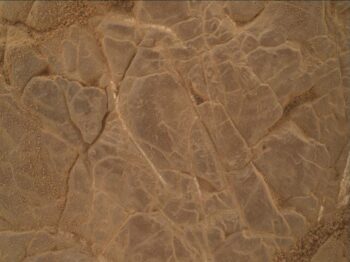
Curiosity Mars Hand Lens Imager photo produced on Sol 3018, February 1, 2021.
Credit: NASA/JPL-Caltech/MSSS
For sol 3018, the team scripted a long drive for Curiosity to the east, making steady progress towards the sulfate-bearing strata of Mt. Sharp, Rice concludes.



Triboelectric Charging was investigated on the MARS Pathfinder Sojourner Rover, which used electric-field concentrating needle points to bleed charge away and prevent Paschen discharge. Dig out your old Science magazines and look at results from the Wheel Abrasion Experiment (WAE).